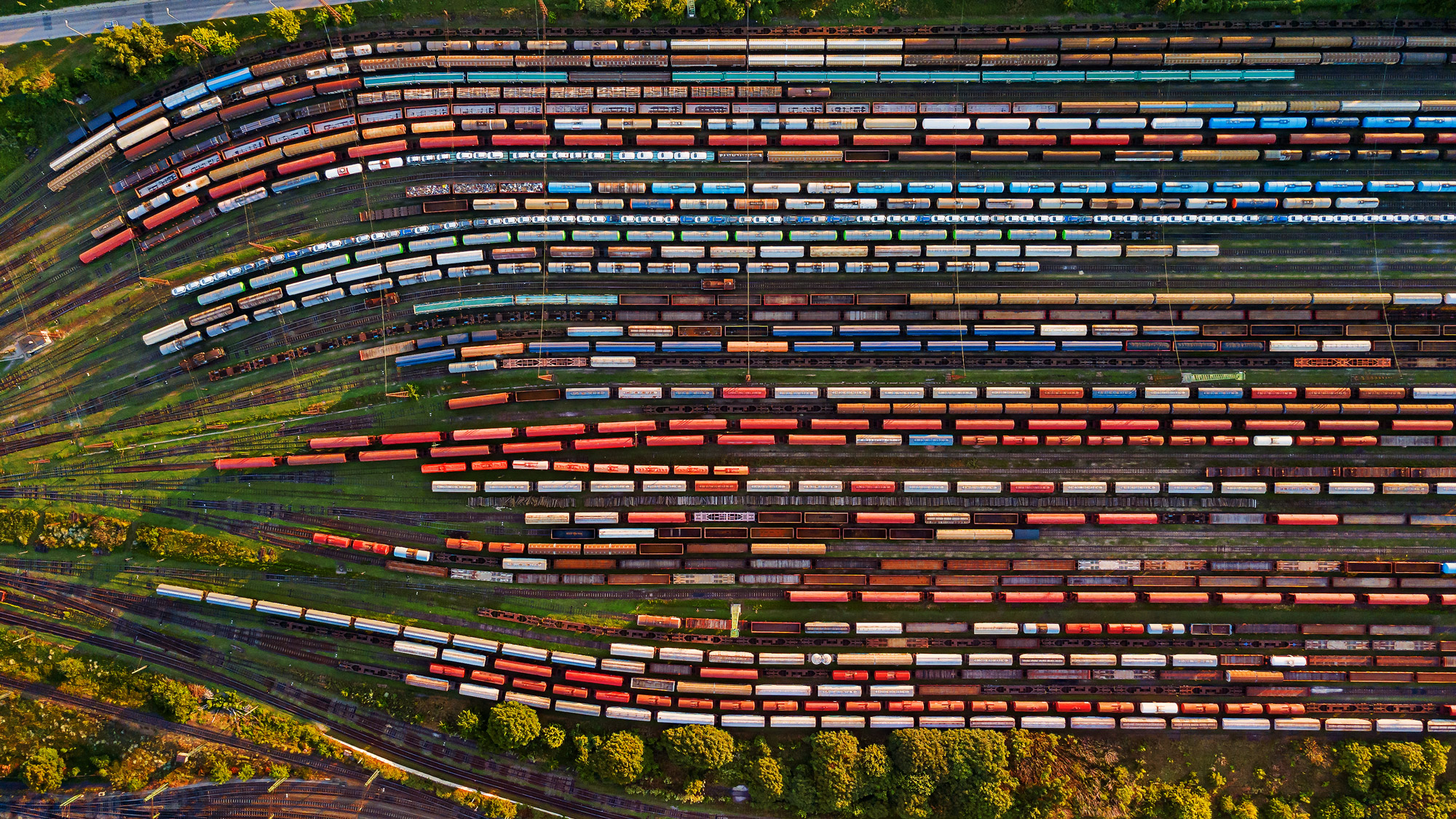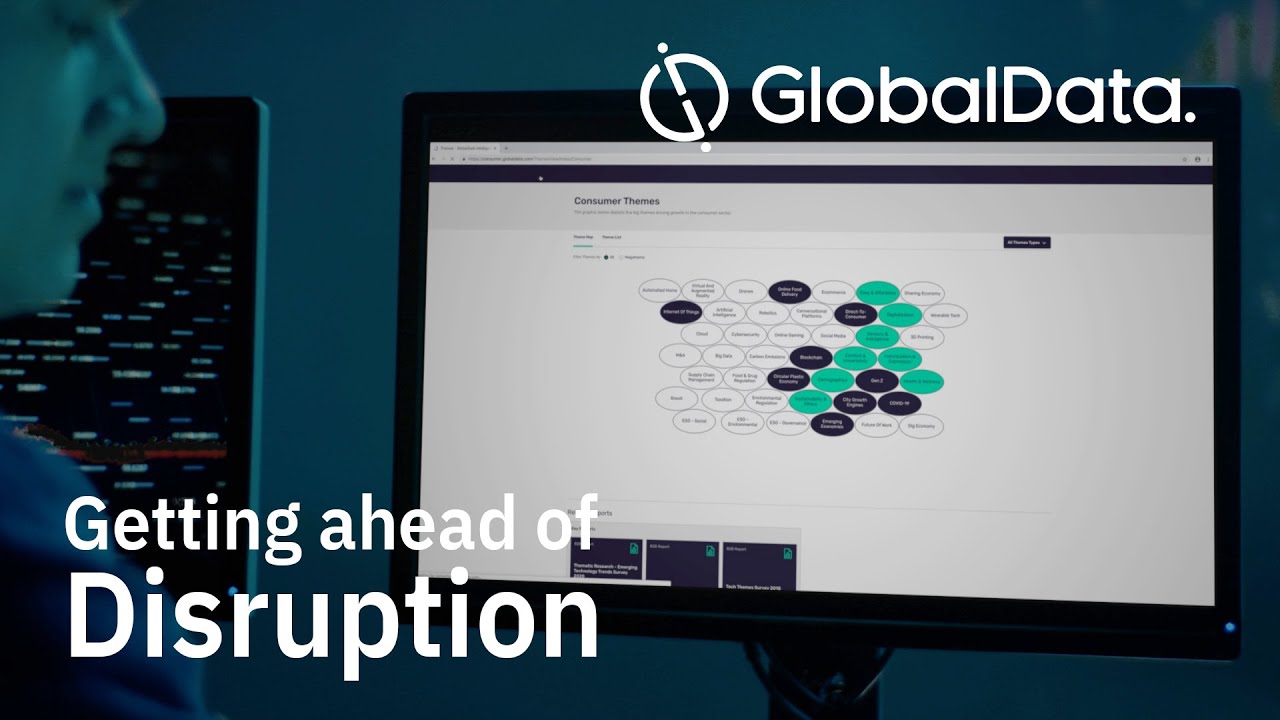Main video supplied by Sergii Chervov and Maksim Safaniuk/Creatas Video+ / Getty Images Plus via Getty Imagesa
Calls to move freight from road to rail are nothing new, however a rail freight renaissance may be gathering momentum, fuelled by governmental policy and investor mandates.
One of the main arguments for this move has been environmental, and dates back decades. However, what’s changing now is a growth in environmental legislation, net-zero goals and decarbonisation targets that are framing rail freight as the smarter business choice.
“A key driver behind the renewed interest in shifting freight from road to rail is the growing focus on decarbonisation, with investor mandates increasingly prioritising sustainability,” explains Andrew Allum, partner at L.E.K. Consulting. “As a result, funds are actively seeking viable opportunities to invest in projects and infrastructure that support this transition.”
Policy facilitates investment because it can help to justify planning consent, local funding or other measures that support the policy maker’s objectives, Mike Garrett, chairman of MDS Transmodal, points out.
“When government policy explicitly supports the development of rail-linked distribution parks for example, it becomes far easier to secure planning permission for those projects. In other words, these policies create a framework that permits progress rather than directly funding it.”
This, along with growing recognition that rail can also be cost competitive if used efficiently, is showcasing rail freight as a more enticing transport option. “Take the UK’s largest supermarket,” says Garratt. “This operates around ten rail freight roundtrips a day, showing that if a company can assemble a full trainload of goods, rail can be economically viable,” Garrett notes.
The state of the market today
In the UK, rail currently holds approximately 10% of the freight transport market, but analysts are seeing positive signs of renewed growth. The Chartered Institute of Logistics and Transport’s (CILT) UK Rail Freight Forum reports a 6% growth in rail freight in 2024/5, with intermodal overall growing by eight percent and domestic intermodal by 13%.
“The shift from road to rail appears to be progressing in the intermodal sector, where containers and standardised freight units make it easier to move goods efficiently by rail,” says Allum. “In contrast, other sectors have remained relatively flat, with little evidence of a significant modal shift so far.”
Intermodal, alongside the rising demand for aggregates, is helping to offset losses from the decline of heavy industries such as coal and steel, which for decades relied heavily on rail for transport.
While the pandemic temporarily disrupted volumes, the European market recovered to 2019 levels by 2023, notes Allum, but “even so, there’s still been only a very limited shift from road to rail overall,” he adds.

Great Western Railway’s regional diesel trains are reaching the end of their lives.
Policy power
Freight growth is strongest where infrastructure and policy align, says Garrett, such as around rail-linked logistics hubs that minimise last-mile costs and boost rail’s competitiveness.
“In the UK, we’ve already got a number of developments, typically known as rail freight distribution interchanges, where several million square feet of warehousing is clustered around the railhead,” Garret adds.
According to MDS Transmodal modelling for Network Rail, the UK government plans to set a 75% rail freight growth target under the new Great British Railways (GBR) structure, highlighting the crucial role of rail-connected logistics parks in achieving that ambition.
Where rail freight is fully private in the UK, land use planning and funding support remain critical. Policies like Mode Shift Revenue Support (MSRS) and the Freight Facilities Grant (FFG) are proven but oversubscribed tools for encouraging modal shift, notes Julian Worth, Chair of CILT’s UK Rail Feight Forum.
The reintroduction of FFG in England, used successfully in Wales and Scotland, could deliver immediate results, he says, helping projects like Breedon Aggregates’ revived Llandudno Junction yard and West Fraser’s £3m Inverness rail link to multiply nationwide.
Over in Europe, while EU targets such as achieving a 30% rail freight share by 2030 have helped maintain policy focus, many industry players find this goal “challenging to say the least,” says Allum. Then there’s other EU regulations, such as the upcoming Euro 7 emissions standard and zero-emission truck targets, that are making road haulage cleaner and could undermine rail’s relative environmental advantage, he notes.
“With the Alternative Fuel Infrastructure Regulation (AFIR) driving the rollout of e-charging and hydrogen refuelling stations, there’s even a scenario where road transport becomes more attractive, and the policy urge towards rail fades,” Allum adds.
Growing the case for rail freight
To make rail freight more competitive, operators and policymakers are focusing on productivity, efficiency and coordination across the supply chain. However, there’s much more that can be done. Experts agree that better train paths would allow faster transits and improved resource use, for example, lowering costs and boosting competitiveness.
Infrastructure upgrades enabling longer and heavier trains would further cut unit costs, while investment in new locomotives, such as the low-carbon Class 99, and selective electrification of key freight routes could promote electric haulage.
Allum adds that the economic disparity between road and rail remains large, meaning taxes and incentives alone have limited impact. Growth, he argues, will come from nimble, customer-oriented private operators, adoption of terminal innovations such as faster wagon coupling and remote monitoring, and the ability to offer complete, reliable end-to-end logistics packages that rival road transport on service, not just price.
Finally, Garratt highlights that vertical integration, as seen with Maritime Transport’s acquisition by global shipping and logistics company MSC, is helping align shipping, ports, and rail under one umbrella, strengthening rail’s role in global supply chains.
“Providing rail is sufficiently commercially friendly to be absorbed by such players, then I think that may well be the real key to the development of rail freight,” he concludes.
This engine autonomously coordinates and deploys a set of specialist medical AI tools… providing complete and helpful recommendations for individual patient cases.
Dyke Ferber, clinician scientist at the Else Kröner Fresenius Center for Digital Health
Caption. Credit:
Total annual production
Australia could be one of the main beneficiaries of this dramatic increase in demand, where private companies and local governments alike are eager to expand the country’s nascent rare earths production. In 2021, Australia produced the fourth-most rare earths in the world. It’s total annual production of 19,958 tonnes remains significantly less than the mammoth 152,407 tonnes produced by China, but a dramatic improvement over the 1,995 tonnes produced domestically in 2011.
The dominance of China in the rare earths space has also encouraged other countries, notably the US, to look further afield for rare earth deposits to diversify their supply of the increasingly vital minerals. With the US eager to ringfence rare earth production within its allies as part of the Inflation Reduction Act, including potentially allowing the Department of Defense to invest in Australian rare earths, there could be an unexpected windfall for Australian rare earths producers.


